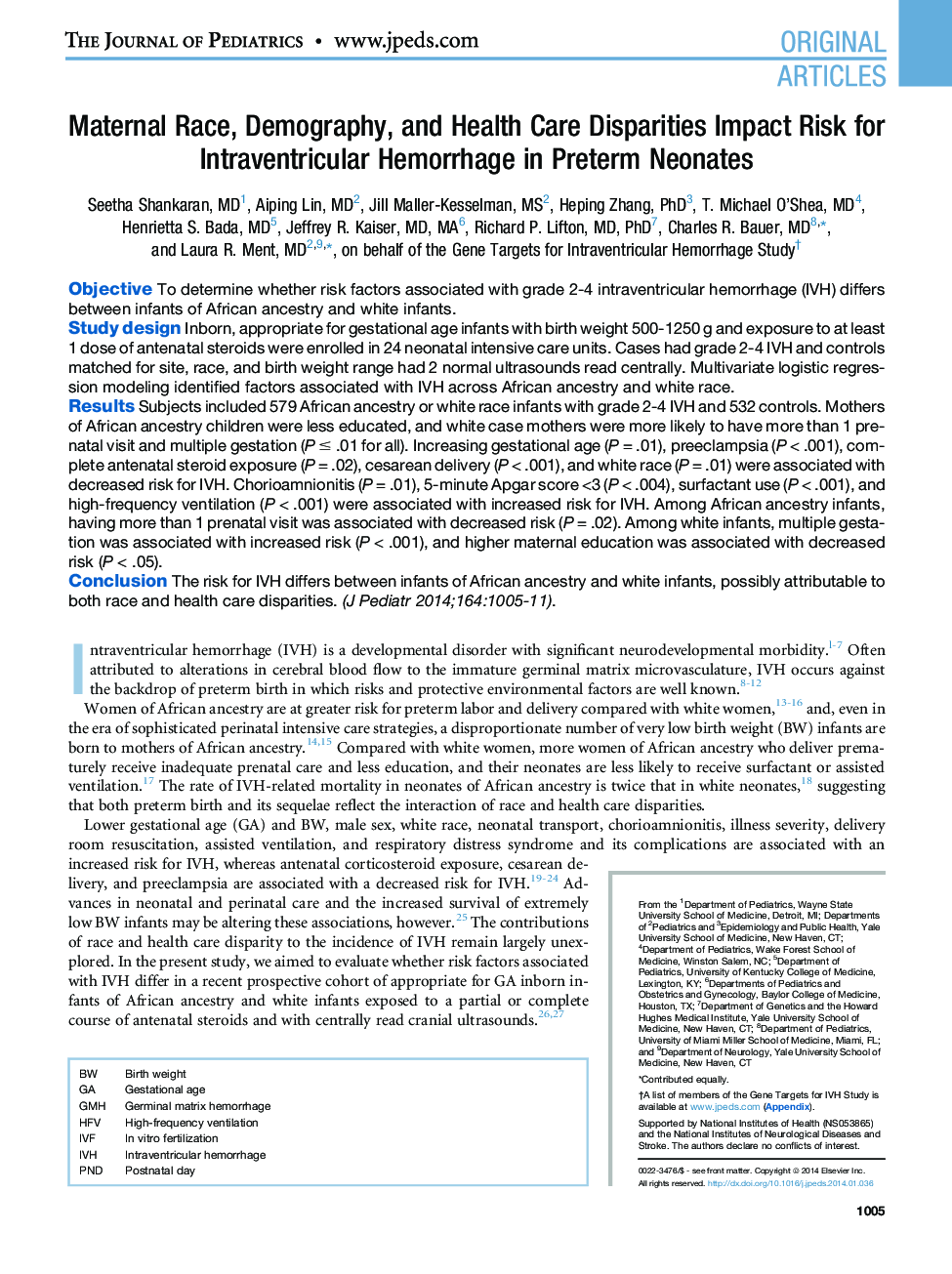| Article ID | Journal | Published Year | Pages | File Type |
|---|---|---|---|---|
| 6222138 | The Journal of Pediatrics | 2014 | 10 Pages |
ObjectiveTo determine whether risk factors associated with grade 2-4 intraventricular hemorrhage (IVH) differs between infants of African ancestry and white infants.Study designInborn, appropriate for gestational age infants with birth weight 500-1250 g and exposure to at least 1 dose of antenatal steroids were enrolled in 24 neonatal intensive care units. Cases had grade 2-4 IVH and controls matched for site, race, and birth weight range had 2 normal ultrasounds read centrally. Multivariate logistic regression modeling identified factors associated with IVH across African ancestry and white race.ResultsSubjects included 579 African ancestry or white race infants with grade 2-4 IVH and 532 controls. Mothers of African ancestry children were less educated, and white case mothers were more likely to have more than 1 prenatal visit and multiple gestation (P â¤Â .01 for all). Increasing gestational age (P = .01), preeclampsia (P < .001), complete antenatal steroid exposure (P = .02), cesarean delivery (P < .001), and white race (P = .01) were associated with decreased risk for IVH. Chorioamnionitis (P = .01), 5-minute Apgar score <3 (P < .004), surfactant use (P < .001), and high-frequency ventilation (P < .001) were associated with increased risk for IVH. Among African ancestry infants, having more than 1 prenatal visit was associated with decreased risk (P = .02). Among white infants, multiple gestation was associated with increased risk (P < .001), and higher maternal education was associated with decreased risk (P < .05).ConclusionThe risk for IVH differs between infants of African ancestry and white infants, possibly attributable to both race and health care disparities.
